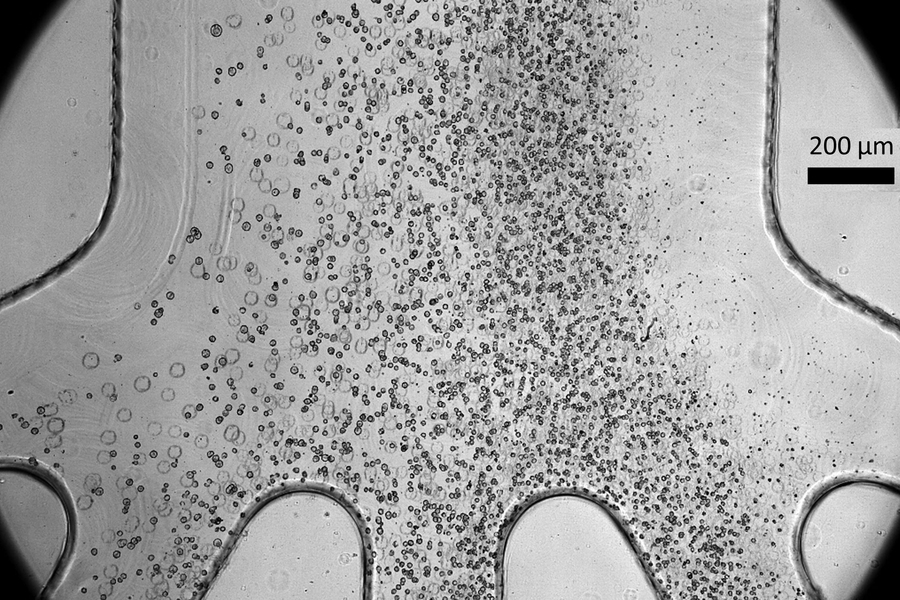
Tan Dai Nguyen, Wai Hon Chooi, Hyungkook Jeon, Jiahui Chen, Jerome Tan, Daniel N Roxby, Cheryl Yi-Pin Lee, Shi-Yan Ng, Sing Yian Chew, Jongyoon Han Author Notes
https://doi.org/10.1093/stcltm/szae002
Abstract:
The transplantation of spinal cord progenitor cells (SCPCs) derived from human-induced pluripotent stem cells (iPSCs) has beneficial effects in treating spinal cord injury (SCI). However, the presence of residual undifferentiated iPSCs among their differentiated progeny poses a high risk as these cells can develop teratomas or other types of tumors post-transplantation. Despite the need to remove these residual undifferentiated iPSCs, no specific surface markers can identify them for subsequent removal. By profiling the size of SCPCs after a 10-day differentiation process, we found that the large-sized group contains significantly more cells expressing pluripotent markers. In this study, we used a sized-based, label-free separation using an inertial microfluidic-based device to remove tumor-risk cells. The device can reduce the number of undifferentiated cells from an SCPC population with high throughput (ie, >3 million cells/minute) without affecting cell viability and functions. The sorted cells were verified with immunofluorescence staining, flow cytometry analysis, and colony culture assay. We demonstrated the capabilities of our technology to reduce the percentage of OCT4-positive cells. Our technology has great potential for the “downstream processing” of cell manufacturing workflow, ensuring better quality and safety of transplanted cells.
